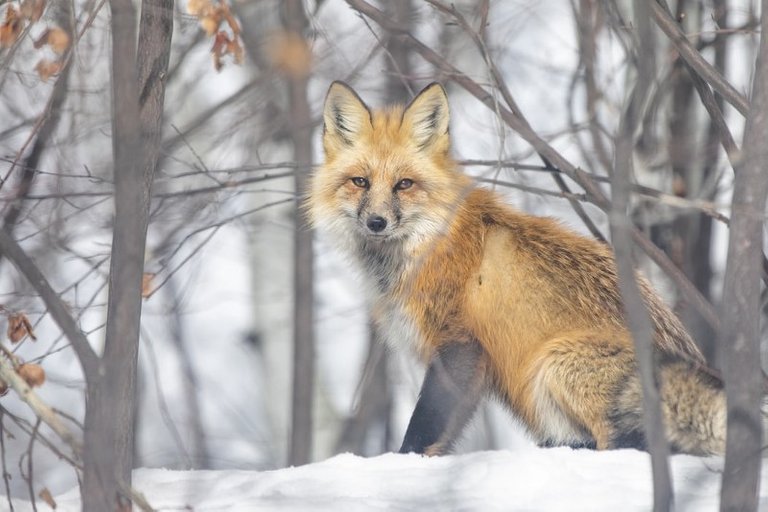Homo Sapiens, the Self-Domesticating Animal
For the past 62 years, Lyudmila Trut and her team of geneticists have been running what is arguably one of the most important experiments in genetics and heredity ever conducted. The experiment was originally conceived of by Lyudmila’s mentor, Dmitri Belyaev.
The experiment proper got underway in 1959 at the Institute of Cytology and Genetics in Novosibirsk, Siberia, with the goal of re-creating the process whereby ancient man domesticated wolves. Rather than use wolves however, the experiment would employ Russian silver foxes.
Having read Darwin’s 1868 publication “The Variation of Animals and Plants Under Domestication” and from his experience with domesticated animals at the Ivanova Agricultural Academy and at the Institute for Fur Breeding Animals, Belyaev already knew what to expect from the foxes as the domestication process advanced.
That is to say, many domesticated mammal species exhibit the same attributes not found in their wild cousins; floppy ears, short, curly tails, neotenized features, diminished cortisol levels, mottled fur, and longer breeding seasons.
These features appeared reliably despite the fact that they’re not what our ancestors were selecting for. Evidently these traits, collectively referred to as “domestication syndrome”, were a package deal that came along with the qualities we did select for, like docility and obedience.
Belyaev hypothesized that selecting for docility and obedience in silver foxes, a cousin of the Russian red fox, would also manifest these traits in them. From each generation of silver foxes, only the top 10% friendliest individuals were permitted to reproduce.
It took only six generations before the foxes licked the hands of the researchers, would let themselves be picked up, sought out pets, whined when researchers left and wagged their tails when they returned. While tame foxes were initially a small minority, today they’re the overwhelming majority of the captive population being studied.
As you might’ve guessed by now, within less than a decade all of the foxes exhibited traits consistent with domestication syndrome. Not only the superficial attributes like neoteny, floppy ears, curly tails and so on but also the hormonal and reproductive changes.
This is consistent with our understanding of how genes are interconnected, and how difficult or impossible it sometimes is to turn on one gene without also activating many others. A second population of foxes was subjected to selection for aggressive behavior, and many of the genetic differences between this population and the tame foxes had to do with serotonin receptor pathways responsible for regulating behavioral temperament.
So, what does any of this have to do with humanity? Despite the best efforts of twentieth century eugenicists, save for a few stragglers that didn’t give up on it right away, there have been no long term human selective breeding programs, much less ones selecting for “tameness”.
…Or have there? Much about how our society is governed rewards prosocial qualities like docility, obedience and friendliness while punishing antisocial qualities like aggression. Execution or imprisonment for violent crimes obviously reduces reproductive opportunities.
Likewise, since the dawn of human civilization we’ve periodically sent our biggest, strongest, most aggressive males to go fight and die in wars. Often the survivors enjoyed increased reproductive opportunities, but it’s a question mark whether they reproduced prolifically enough to compensate for all their buddies that never came home.
This effect was counterbalanced somewhat by the fact that for much of history males were the choosers, while women lacked autonomy in who they would marry and ultimately reproduce with. The qualities men admire in men differing markedly, you see, from the qualities women find appealing in men.
We might therefore hypothesize that in modern societies where women are the choosers, selective pressure favoring domestication syndrome attributes has increased. But is that what we observe? Humans do have neotenized cranial morphology compared to all other apes, as well as unusually long reproductive periods.
Curly tails are out, being that we lost our tails long ago. Floppy ears is a no, human ears very closely resemble the ears of other great apes. Mottled skin? Possibly? Do moles count? I’m hard pressed to tell you if our patterns of skin pigmentation differ significantly from our nearest living cousins without shaving some chimps, and I can’t do that again, it’s how I got banned from the zoo.
In recent years there’s been a meme circulating, the “soy boy”. We might consider it an expression of the public’s subjective perception that males have changed significantly in the past few generations. More childish, more docile, more obedient. Less aggressive, less assertive and territorial.
Fertility is also plummeting, alongside an increase in hormonal imbalances related to gender expression, but those trends are thought to be linked to microplastic particulate contamination rather than selective pressures.
Whether the “soy boy” meme is a genuine case of humans recognizing in one another symptoms of domestication syndrome, or just internet meme lords doing their thing, I still personally suspect some degree of self-domestication has in fact taken place. Probably it began as soon as we transitioned away from hunter-gatherers to agrarian communities.
The selective pressures of an agrarian community differ substantially from the selective pressures experienced by hunter gatherers. Even moreso for nomads, as compared to hunter gatherer tribes living together in villages. As we pressed the advantages inherent to prosocial group selection strategies further and further, many traits which were formerly advantageous became liabilities, and vice versa.
This strategy worked so well that there’s 7.6 billion of us now, blanketing every landmass as well as Earth’s poles, under the sea and in low Earth orbit. Whether or not it’s to any given person’s individual taste, it seems like this trend will continue its upward trajectory. One wonders, though, how humans of the future will appear to us if the self-domestication hypothesis is true.
Domesticated dogs are delightful…to their masters. How do they appear to wolves? Ineffectual, clumsy, dependent, and vulnerable. Probably much as humans appear to chimps, gorillas and the other great apes. We’re like the wild man of the woods, Enkidu, from the Sumerian epic Gilgamesh.
Tempted out of the woods by the many benefits of civilization. Donning clothing, washing his body, cutting his hair so the herd will accept him. But at what cost? In leaving the wilderness behind, we gained the world, but lost our wildness. Sitting at my desk writing this, within an air conditioned shelter less than ten feet from refrigerated food, it sure feels like that was the right call. But only time will tell.





